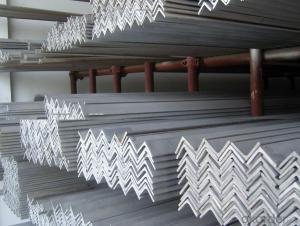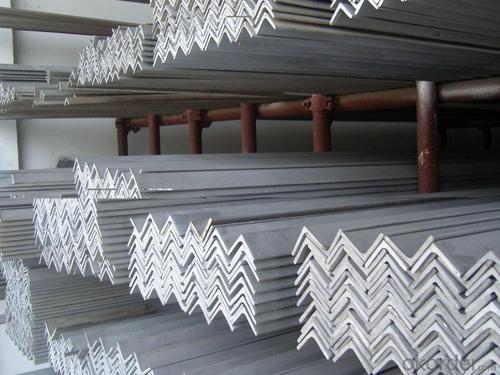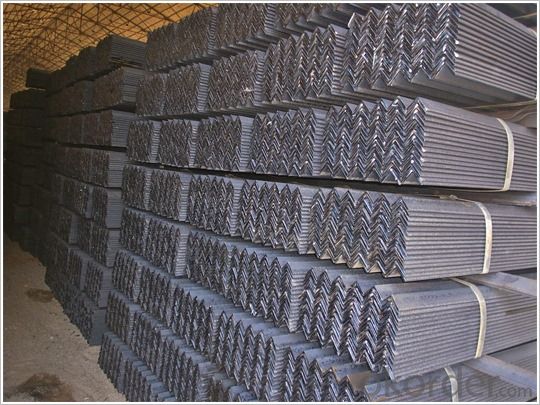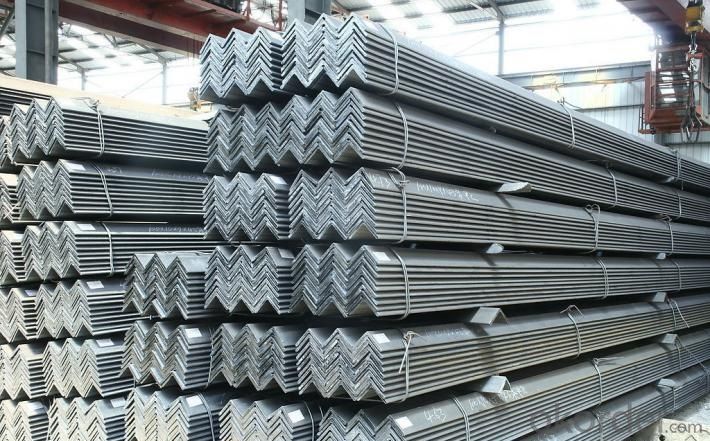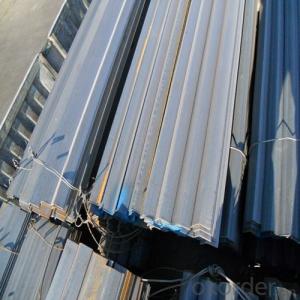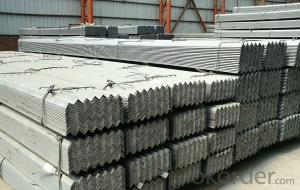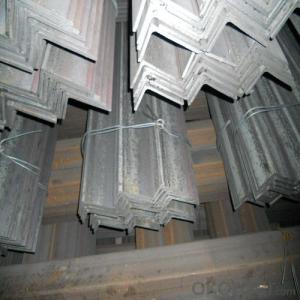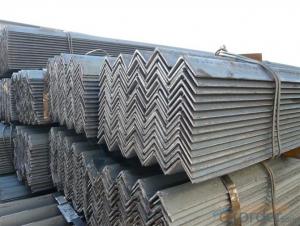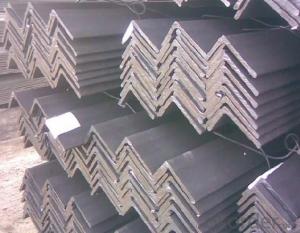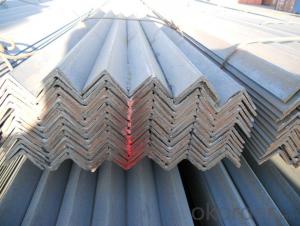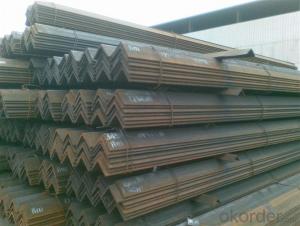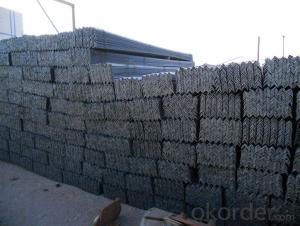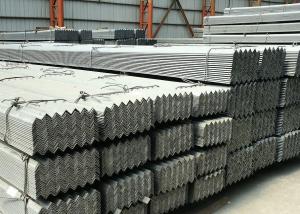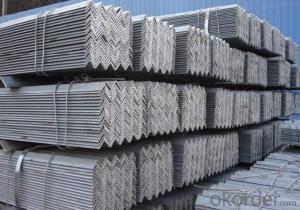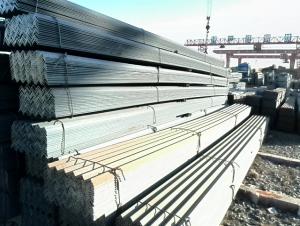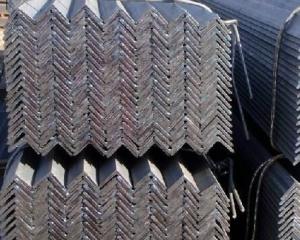GB Q345 Steel Angle with High Quality 80*80mm
- Loading Port:
- Tianjin
- Payment Terms:
- TT or LC
- Min Order Qty:
- 25 m.t
- Supply Capability:
- 10000 m.t/month
OKorder Service Pledge
OKorder Financial Service
You Might Also Like
Specifications of GB Q345 Steel Angle with High Quality 80*80mm:
1.Standards: GB
2.Material: Q345 or Equivalent
3.Length: 6m, 12m
4.Size:
| Size (mm) | Mass (kg/m) | Size (mm) | Mass (kg/m) |
| 80*80*6 | 7.376 | 80*80*8 | 9.658 |
| 80*80*7 | 8.525 |
Usage & Applications of GB Q345 Steel Angle with High Quality 80*80mm:
Trusses;
Transmission towers;
Telecommunication towers;
Bracing for general structures;
Stiffeners in structural use.
Packaging & Delivery of GB Q345 Steel Angle with High Quality 80*80mm:
1. Transportation: the goods are delivered by truck from mill to loading port, the maximum quantity can be loaded is around 40MTs by each truck. If the order quantity cannot reach the full truck loaded, the transportation cost per ton will be little higher than full load.
2. With bundles and load in 20 feet/40 feet container, or by bulk cargo, also we could do as customer's request.
3. Marks:
Color mark: There will be color marking on both end of the bundle for the cargo delivered by bulk vessel. That makes it easily to distinguish at the destination port.
Tag mark: There will be tag mark tied up on the bundles. The information usually including supplier logo and name, product name, made in China, shipping marks and other information request by the customer.
If loading by container the marking is not needed, but we will prepare it as customers' request.
FAQ:
Q1: Why buy Materials & Equipment from OKorder.com?
A1: All products offered byOKorder.com are carefully selected from China's most reliable manufacturing enterprises. Through its ISO certifications, OKorder.com adheres to the highest standards and a commitment to supply chain safety and customer satisfaction.
Q2: How do we guarantee the quality of our products?
A2: We have established an advanced quality management system which conducts strict quality tests at every step, from raw materials to the final product. At the same time, we provide extensive follow-up service assurances as required.
Q3: How soon can we receive the product after purchase?
A3: Within three days of placing an order, we will arrange production. The shipping date is dependent upon the quatity, how many sizes you want and the plan of production, but is typically 30 to 45 days from the beginning of production.
Images of GB Q345 Steel Angle with High Quality 80*80mm:
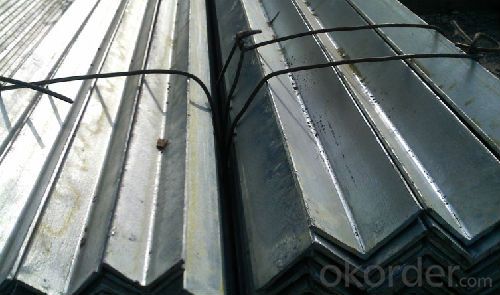

*If you would like to get our price, please inform us the size, standard/material and quantity. Thank you very much for your attention.
- Q: Do steel angles require maintenance?
- Yes, steel angles do require maintenance. While steel is a durable material, it is still susceptible to rust and corrosion, especially when exposed to moisture or harsh environmental conditions. Regular maintenance is necessary to prevent these issues and ensure the longevity of steel angles. Some common maintenance practices include inspecting for any signs of rust or damage, cleaning the surface to remove dirt and debris, and applying protective coatings or paints to prevent corrosion. Additionally, proper storage and handling of steel angles can also contribute to their maintenance. It is important to follow manufacturer guidelines and consult with professionals to determine the specific maintenance requirements for steel angles in different applications.
- Q: Can steel angles be used in load-bearing columns?
- Load-bearing columns can indeed utilize steel angles. Construction frequently incorporates steel angles due to their robustness and longevity. These angles offer structural reinforcement and support for load-bearing columns. Compared to alternative materials, the angle shape of steel enhances stability and load-bearing capacity. In the construction industry, steel angles find widespread application in buildings, bridges, and various structures necessitating load-bearing columns.
- Q: Can steel angles be used in signage?
- Yes, steel angles can be used in signage. Steel angles are commonly used as a structural support for signs, providing stability and durability. They can be easily welded or bolted together to create a sturdy framework for mounting signage materials such as panels, letters, or graphics. Additionally, steel angles offer versatility in terms of design options, allowing for various shapes and sizes of signage to be constructed.
- Q: How do steel angles contribute to the overall aesthetic of a structure?
- There are numerous ways in which steel angles can enhance the overall aesthetic of a structure. Firstly, their sleek and tidy lines can bring a modern and contemporary touch to the design. The sharp edges and precise angles of steel angles can generate a feeling of strength and solidity, resulting in a bold and industrial atmosphere for the structure. Furthermore, steel angles offer the opportunity to create captivating and dynamic shapes within the architecture. Their versatility allows for the development of unique and attention-grabbing designs, such as cantilevered balconies or intricate lattice patterns. These visually pleasing features can become focal points of the structure, enhancing its overall aesthetic appeal. In addition, steel angles can be utilized to establish a sense of rhythm and repetition in the design. By incorporating them in a consistent pattern or arrangement, they can create a visual harmony and balance. This repetition can be particularly effective in large-scale structures, where the steel angles can break up the monotony of the façade and add visual interest. Moreover, steel angles contribute to the durability and longevity of the structure, which, in turn, enhances its aesthetic value. Steel is renowned for its strength and resilience, and when used in angles, it provides structural support and stability. This durability ensures that the structure remains visually appealing for many years without compromising on safety or integrity. Overall, steel angles play a significant role in the aesthetic of a structure, adding a sense of modernity, strength, and versatility. Their clean lines, dynamic shapes, and durability all contribute to creating a visually appealing and impactful architectural design.
- Q: Can steel angles be used as decorative elements?
- Certainly, steel angles have the potential to serve as delightful decorative elements. Steel angles, also referred to as L-shaped metal profiles, possess the ability to introduce an industrial or contemporary aesthetic to any given area. They possess a multitude of applications that can elevate the overall design and appearance of a room or outdoor space. One commonly employed application of steel angles as decorative elements is in the realm of architectural and interior design. These angles can be utilized as trim or edging on walls, ceilings, or furniture, thereby bestowing a distinct and fashionable appearance. Moreover, they can be employed to craft captivating patterns or designs on surfaces, such as herringbone or chevron patterns, which add visual allure and a contemporary ambiance. Furthermore, steel angles can be employed as decorative supports or brackets for shelves, countertops, or other fixtures. In addition to providing structural support, these angles contribute a modern and industrial touch to the overall design concept. By painting or powder-coating steel angles in various colors, they can be further enhanced to match the desired aesthetic, thereby augmenting their decorative appeal. Additionally, steel angles can also be employed as decorative elements in outdoor spaces. They can be incorporated into fences, gates, or railings, offering a durable and stylish solution. In the realm of landscaping, steel angles can be employed as decorative accents, such as creating borders or delineating flower beds, thereby introducing a contemporary design approach to the outdoor environment. In summary, steel angles present a versatile and visually appealing option for incorporating decorative elements into a wide range of design projects. Their sleek and industrial appearance, coupled with their strength and durability, render them a popular choice for both interior and exterior decorative purposes.
- Q: Are there any industry standards or certifications for steel angles?
- Yes, there are industry standards and certifications for steel angles. The American Society for Testing and Materials (ASTM) has established standards such as ASTM A36/A36M, ASTM A572/A572M, and ASTM A588/A588M, which outline the requirements for the composition, mechanical properties, and dimensions of steel angles. Additionally, various certification bodies, such as ISO (International Organization for Standardization) and the American Institute of Steel Construction (AISC), provide certifications to ensure quality and compliance with industry standards.
- Q: How do you store steel angles to prevent damage?
- To store steel angles and prevent damage, it is important to follow some best practices. Firstly, ensure that the storage area is clean, dry, and free from any sources of moisture or humidity. Moisture can lead to corrosion and rusting of the angles, causing damage over time. It is recommended to store steel angles indoors, in a well-ventilated area, away from direct sunlight or extreme temperature fluctuations. This will help minimize the risk of any potential damage caused by exposure to the elements. When stacking steel angles, it is crucial to use proper supports or racks to prevent them from bending or warping under their own weight. Avoid stacking them too high, as it can cause instability and potential accidents. Using pallets or other suitable storage systems can help maintain the integrity of the angles and reduce the risk of damage. Moreover, it is advisable to separate different sizes and types of steel angles to prevent scratching, chipping, or other physical damage. Placing protective material, such as plastic or rubber mats, between layers or individual angles can offer an additional layer of protection. Regular inspections of the storage area are critical to identify any signs of damage, such as rust spots or deformation, early on. In case of any issues, it is essential to address them promptly to prevent further deterioration and ensure the quality of the steel angles.
- Q: Can steel angles be used for shelving units?
- Yes, steel angles can be used for shelving units. Steel angles provide excellent strength and durability, making them suitable for supporting heavy loads on shelves. They can be easily attached to walls or used as a framework for freestanding shelves.
- Q: What is the typical size range for steel angles?
- The typical size range for steel angles can vary depending on the specific application and industry. However, in general, steel angles are available in a range of sizes that typically fall within the dimensions of 20-200 millimeters (mm) in width and 3-20 mm in thickness. The length of steel angles can vary as well, typically ranging from 3 to 12 meters. These dimensions allow for a versatile range of applications, including structural support in construction, manufacturing of machinery and equipment, and various architectural uses. It's important to note that these size ranges are common, but there may be variations and custom sizes available depending on the specific requirements of a project.
- Q: Can steel angles be used for support frames in industrial machinery?
- Indeed, support frames in industrial machinery can make effective use of steel angles. Construction and fabrication often rely on steel angles for their remarkable traits of strength, durability, and versatility. These angles offer structural stability and support to a wide range of structures, including machinery frames. The availability of steel angles in multiple sizes and thicknesses allows for customization to meet precise load-bearing needs. Moreover, steel's inherent rigidity and exceptional tensile strength render it an optimal choice for supporting heavy machinery and equipment within industrial environments.
Send your message to us
GB Q345 Steel Angle with High Quality 80*80mm
- Loading Port:
- Tianjin
- Payment Terms:
- TT or LC
- Min Order Qty:
- 25 m.t
- Supply Capability:
- 10000 m.t/month
OKorder Service Pledge
OKorder Financial Service
Similar products
Hot products
Hot Searches
Related keywords
